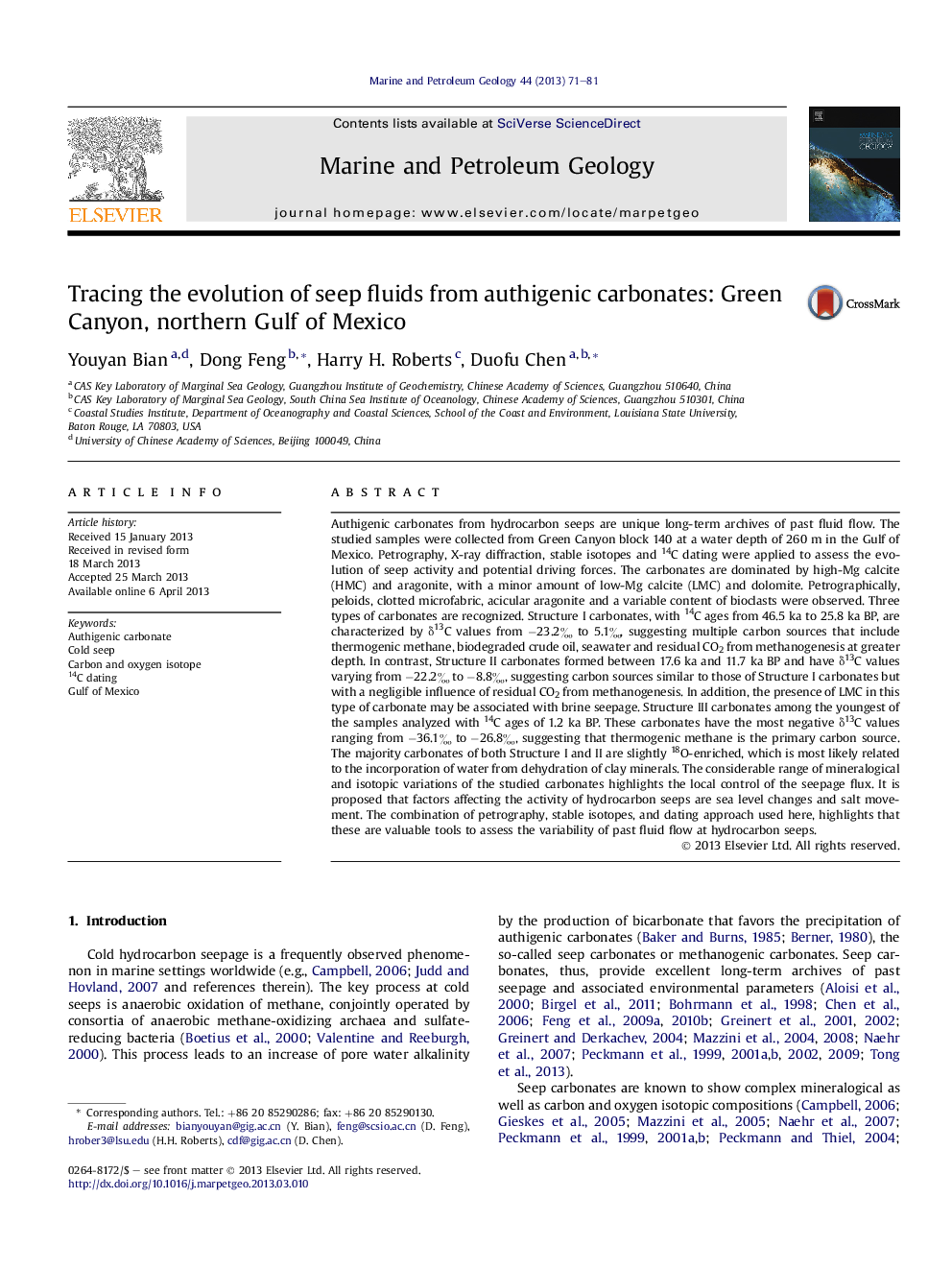| کد مقاله | کد نشریه | سال انتشار | مقاله انگلیسی | نسخه تمام متن |
|---|---|---|---|---|
| 4695688 | 1637180 | 2013 | 11 صفحه PDF | دانلود رایگان |
• Authigenic carbonates are excellent archives of past fluid flow at cold seeps.
• Distinct minerals and δ13C values constrain formation conditions of seep carbonates.
• Factors affecting the activity of seeps are sea level change and salt movement.
• Precipitation of low Mg-calcite may relate to the locally brine seeping.
Authigenic carbonates from hydrocarbon seeps are unique long-term archives of past fluid flow. The studied samples were collected from Green Canyon block 140 at a water depth of 260 m in the Gulf of Mexico. Petrography, X-ray diffraction, stable isotopes and 14C dating were applied to assess the evolution of seep activity and potential driving forces. The carbonates are dominated by high-Mg calcite (HMC) and aragonite, with a minor amount of low-Mg calcite (LMC) and dolomite. Petrographically, peloids, clotted microfabric, acicular aragonite and a variable content of bioclasts were observed. Three types of carbonates are recognized. Structure I carbonates, with 14C ages from 46.5 ka to 25.8 ka BP, are characterized by δ13C values from −23.2‰ to 5.1‰, suggesting multiple carbon sources that include thermogenic methane, biodegraded crude oil, seawater and residual CO2 from methanogenesis at greater depth. In contrast, Structure II carbonates formed between 17.6 ka and 11.7 ka BP and have δ13C values varying from −22.2‰ to −8.8‰, suggesting carbon sources similar to those of Structure I carbonates but with a negligible influence of residual CO2 from methanogenesis. In addition, the presence of LMC in this type of carbonate may be associated with brine seepage. Structure III carbonates among the youngest of the samples analyzed with 14C ages of 1.2 ka BP. These carbonates have the most negative δ13C values ranging from −36.1‰ to −26.8‰, suggesting that thermogenic methane is the primary carbon source. The majority carbonates of both Structure I and II are slightly 18O-enriched, which is most likely related to the incorporation of water from dehydration of clay minerals. The considerable range of mineralogical and isotopic variations of the studied carbonates highlights the local control of the seepage flux. It is proposed that factors affecting the activity of hydrocarbon seeps are sea level changes and salt movement. The combination of petrography, stable isotopes, and dating approach used here, highlights that these are valuable tools to assess the variability of past fluid flow at hydrocarbon seeps.
Journal: Marine and Petroleum Geology - Volume 44, June 2013, Pages 71–81
